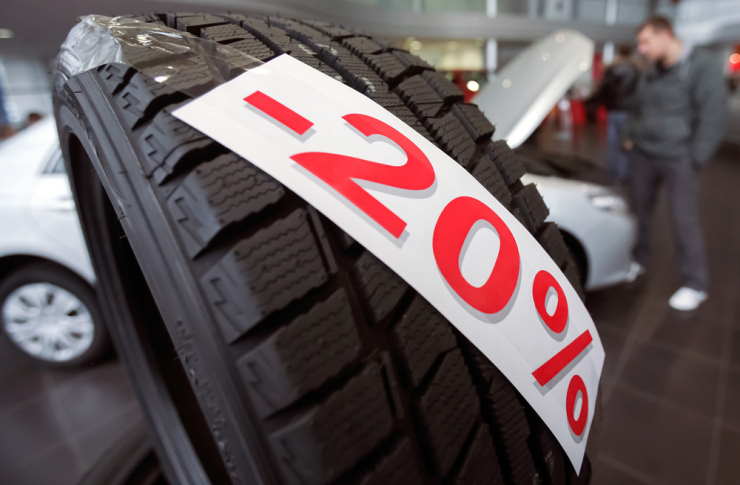Car Clearance Explained: How It Works and What to Expect
Car clearance sales represent significant opportunities for budget-conscious buyers to purchase new or nearly-new vehicles at substantially reduced prices. These sales events occur when dealerships need to make room for incoming inventory, meet sales quotas, or clear out less popular models. Understanding how car clearance events work can help shoppers navigate these sales effectively and potentially save thousands of dollars on their next vehicle purchase.

Typical Discounts You Can Expect
Car clearance sales typically offer more substantial discounts than regular promotions, but the exact savings vary based on several factors. On average, shoppers can expect discounts ranging from 10% to 20% off the manufacturer’s suggested retail price (MSRP) during standard clearance events. End-of-year clearances often provide the most significant savings, with discounts sometimes reaching 15-30% as dealerships make room for new model year inventory.
Model-specific factors heavily influence discount levels. Less popular models or those being discontinued might see discounts of up to 40% in some cases. Luxury vehicles typically maintain higher price points even during clearance but may include added value through complimentary maintenance packages or premium features at no extra cost.
Timing plays a crucial role in maximizing savings. End-of-month, end-of-quarter, and particularly end-of-year periods (October through December) generally offer the most aggressive pricing as dealerships push to meet sales targets.
What to Check Before Buying a Clearance Car
Before rushing into a clearance purchase, conduct thorough research to ensure you’re making a sound investment. Start by researching the specific model’s reliability history and common issues using resources like Consumer Reports or J.D. Power. Understanding why a particular vehicle is on clearance can provide valuable insight—is it due to model-year changeover, design updates, or potential reliability concerns?
Perform a comprehensive vehicle inspection or arrange an independent pre-purchase inspection by a qualified mechanic. Pay special attention to:
-
Complete service history documentation
-
Signs of mechanical issues or previous accidents
-
Warranty coverage details and limitations
-
Vehicle identification number (VIN) verification
-
Tire condition and remaining tread life
For new clearance vehicles, check the manufacture date. Models that have been sitting on lots for extended periods may experience battery issues or require immediate maintenance despite being technically “new.” Additionally, verify that all advertised features and options are actually present in the vehicle.
Tips for Getting the Best Deal
Success in clearance car shopping requires strategy and preparation. Start by researching current market values using tools like Kelley Blue Book or Edmunds to establish a baseline for fair pricing. This knowledge provides leverage during negotiations and helps identify truly exceptional deals.
Timing your purchase strategically can yield additional savings. Shopping during weekdays rather than busy weekends often means more attentive sales staff and potentially more flexibility on pricing. Late in the month—when salespeople are pushing to meet quotas—typically creates favorable negotiating conditions.
Consider expanding your search radius to include multiple dealerships, as pricing can vary significantly between locations. Online platforms often list clearance inventory across multiple dealerships, making comparison shopping easier. Don’t hesitate to use competitive quotes as negotiation leverage.
When evaluating financing options, get pre-approved through your bank or credit union before visiting the dealership. This approach provides a clear understanding of your budget limitations and gives you an alternative to dealer financing, which may not always offer the best terms during clearance events.
Understanding Clearance Car Pricing
Car clearance pricing varies significantly based on multiple factors including vehicle age, popularity, condition, and dealership inventory goals. The table below provides a general overview of typical clearance discounts by vehicle category:
| Vehicle Category | Average Discount | Best Time to Buy | Typical Savings |
|---|---|---|---|
| New Current Model Year | 10-15% off MSRP | End of calendar year | $3,000-$5,000 |
| New Previous Model Year | 15-25% off MSRP | When next model arrives | $5,000-$9,000 |
| Demo/Dealer Vehicles | 15-20% off MSRP | Quarter-end periods | $4,500-$7,000 |
| Discontinued Models | 20-40% off MSRP | Within 6 months of announcement | $6,000-$12,000 |
| Luxury Clearance Models | 10-20% off MSRP | December | $6,000-$15,000 |
Prices, rates, or cost estimates mentioned in this article are based on the latest available information but may change over time. Independent research is advised before making financial decisions.
Potential Drawbacks of Clearance Vehicles
While clearance sales offer attractive pricing, buyers should consider potential disadvantages. Clearance vehicles often have limited selection in terms of colors, options, and features—the most popular configurations typically sell first. Additionally, discontinued models may face accelerated depreciation and potentially reduced parts availability in the future.
For some clearance vehicles, particularly those with significant discounts, resale value might be affected more substantially than standard purchases. Technology features on clearance models might be outdated compared to newer iterations, especially in categories where technological advancement moves rapidly.
Despite these considerations, clearance cars represent excellent value for buyers who prioritize price over having the absolute latest features or who plan to keep their vehicles for extended periods, minimizing the impact of depreciation concerns.
Conclusion
Car clearance sales present valuable opportunities for substantial savings on vehicle purchases when approached with proper research and preparation. Understanding typical discount ranges, conducting thorough pre-purchase inspections, and employing strategic negotiation tactics can help shoppers navigate these sales events successfully. By balancing the allure of deep discounts with practical considerations about a vehicle’s condition, history, and future value, buyers can make informed decisions that maximize both immediate savings and long-term satisfaction with their purchase.




